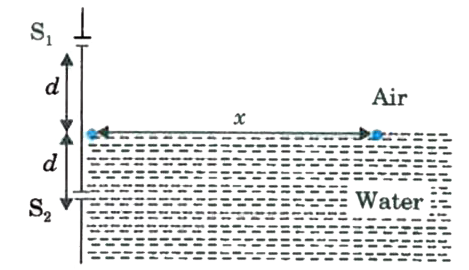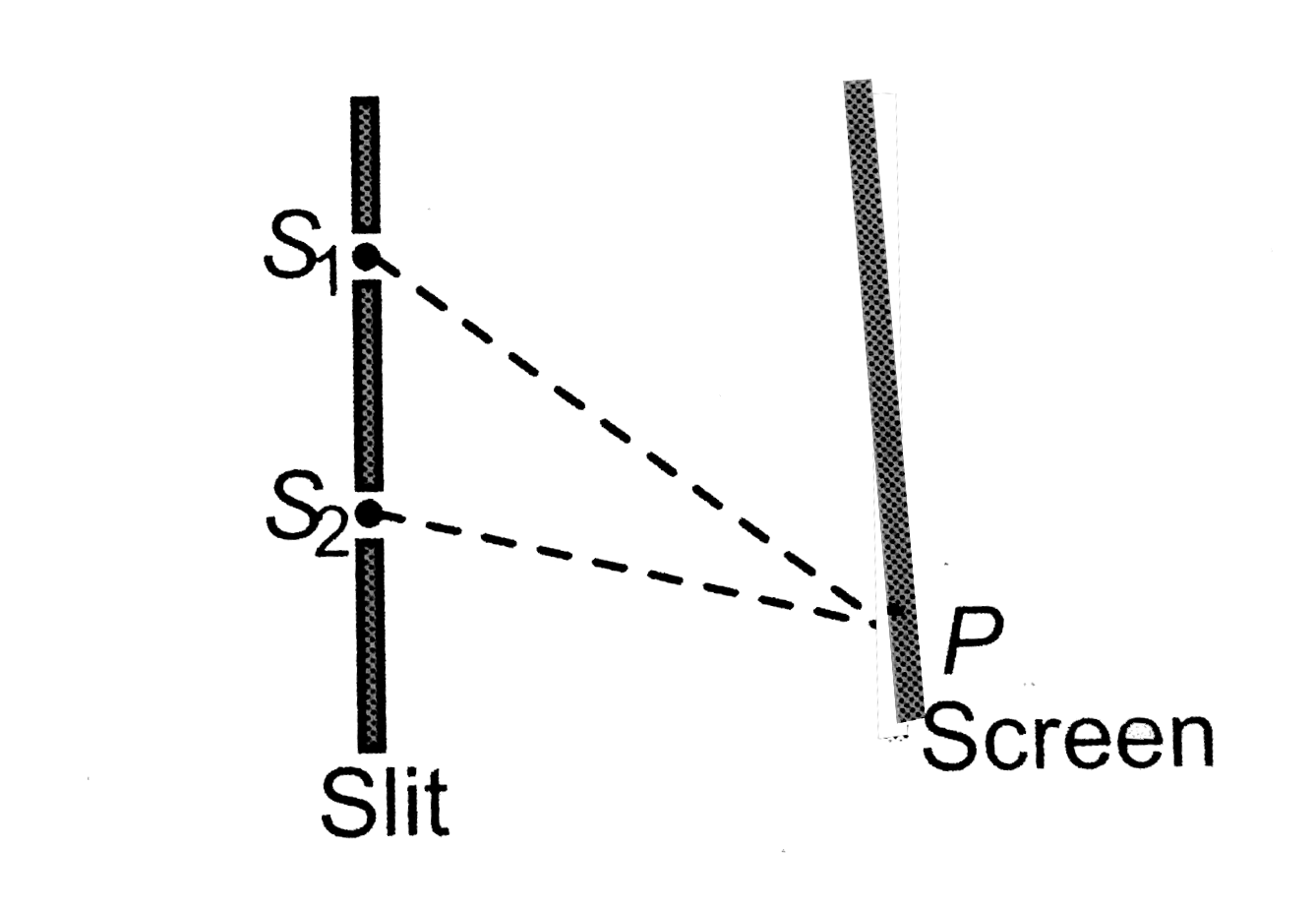A Young's double slit interference arrangement with slits S1 and S2 is immersed in water (refractive index =4/3) as shown in the figure. The positions of maxima on the surface of water are given by x2=p2m2λ2−d2, where λ is the wavelength of light in air (reflactive index = 1), 2d is the separation between the slits and m is an integer. The value of P is ..........

The correct Answer is:3
For constructive interference Δx=mλ
43√d2+x2−√d2+x2=mλ
12√d2+x2=mλ
x2=9m2λ2−d2
p=3

Topper's Solved these Questions
- BOOK - RESONANCECHAPTER - WAVE OPTICSEXERCISE - Exercise-3 (Part-2)15videos
WAVE OPTICS
- BOOK - RESONANCECHAPTER - WAVE OPTICSEXERCISE - Exercise-3 (Part-3)22videos
WAVE OPTICS
- BOOK - RESONANCECHAPTER - WAVE OPTICSEXERCISE - Exercise-2 (Part-4)8videos
WAVE OPTICS
- BOOK - RESONANCECHAPTER - WAVE ON STRING EXERCISE - Exercise- 3 PART I19videos
WAVE ON STRING
Similar Questions
A Young's double-slit interference arrangement with slits S1andS2 is immersed in water (refractive index = 4/3) as shown in the figure. The positions of maxima on the surface of water are given by x2=p2m2λ2−d2, where λ is the wavelength of light in air (refractive index = 1), 2d is the separation between the slits and m is an interger. The value of p is

0123456789View SolutionIn Young's double slit experiment, how many maxima can be obtained on a screen (including central maxima). If d=5λ2 (where λ is the wavelength of light)?
View Solution
Knowledge Check
- Question 1 - Select One
In a Young's double slit experimental arrangement shown here, if a mica sheet of thickness t and refractive indec μ is placed in front of the slit S1, then the path difference (S1P−S2P) is
 A(a) Decreases by (μ−1)tB(b) Increases by (μ−1)tC(c) Does not changeD(d) Increases by μt
A(a) Decreases by (μ−1)tB(b) Increases by (μ−1)tC(c) Does not changeD(d) Increases by μt - Question 2 - Select One
In young's double slit experiment, distance between the slit S1andS2 is d and the distance between slit and screen is D . Then longest wavelength that will be missing on the screen in front of S1 is
Ad2DBd22DCDd2DNone of these - Question 3 - Select One
At two point P and Q on screen in Young's double slit experiment, waves from slits S1 and S2 have a path difference of 0 and λ4 respectively. The ratio of intensities at P and Q will be:
A2:1B√2:1C4:1D3:2
In Young's double slit experiment, how many maxima can be obtained on a screen (including central maxima). If d=5λ2 (where λ is the wavelength of light)?
View SolutionDetermine what happens to the double slits interference pattern if one of the slits is covered with a thin, transparent film whose thickness is λ2(μ−1), where λ is the wavelength of the incident light and mu is the index of refraction of the film.
View SolutionA Young's double slit apparatus is immersed in a liquid of refractive index μ1. The slit plame touches the liquid surface. A parallel beam of monochromatic light of wavelength λ (in air) is incident normally on the slits.
a. Find the fringe width.
b. If one of the slits (say S2) is covered by a transparent slab of refrative index μ2 and thickless t as shown, find the new position of central maxima.
c. Now, the other slit, S1 is also covered by a slab of same thickness and refractive index μ3 as shown in Fig. 2.49 due to which the central maxima recovers it positon, find the value of μ3
Find the ratio of intensities at O in the three conditions (a), (b), and (c).View SolutionIn a Young's double slit experiment, one of the slits is covered by a thin film of thickness t=0.04 mm, and refractive index μ=1.2+9×10−14m2λ2, where λ is the wavelength in meter. A beam of light consisting of two wavelength λ1=400nmandλ2=600nm falls normally on the plane of the slits. Find the distance between two central maxima in milimeter. Distance of screen from slits is 400 times the the separation between the slits.
View SolutionThe Young's double slit experiment the wavelength of light λ=4×10−7m and separation between the slits is d=0.1mm. If the frintge width is 4mm then the seperation between the slits and the screen will be
View Solution

